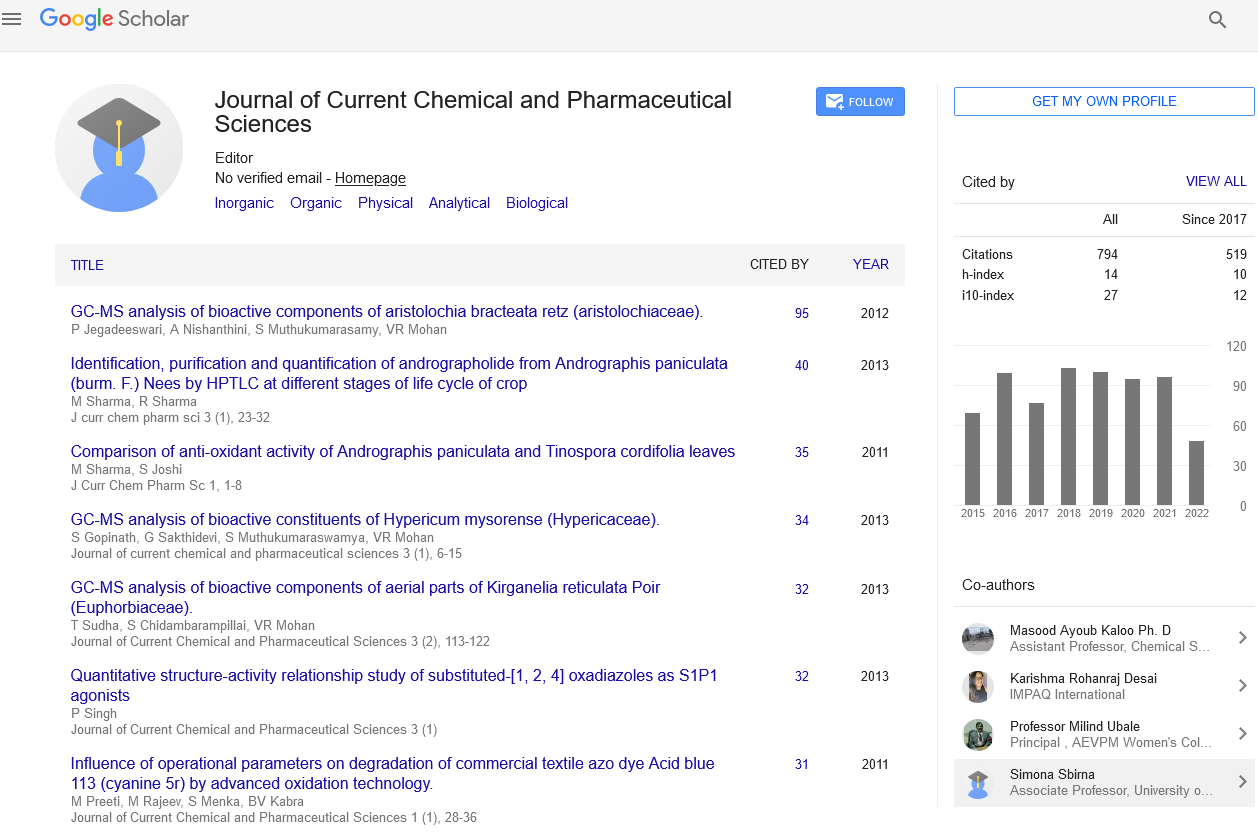Abstract
Fe (III)-ZSM5 as an Environment-Friendly Catalyst to Oxidize 2, 4, 6-Trichlorophenol in Aqueous Solution
Author(s): Hrishikesh Sarma and K. G. BhattacharyyaThe common practice of microbiological oxidation of organic pollutants in the effluents of organochemical and petroleum-based industries is not effective in mineralizing chlorinated phenols, which are persistent and toxic to organisms even at low concentrations. Effluents containing these recalcitrant organics require tertiary treatment and catalytic wet oxidation has shown tremendous promise in this regard. The use of hydrogen peroxide as the oxidizing agent in the presence of a catalyst (Catalytic Wet Peroxide Oxidation, CWPO) has emerged as a clean and effective alternative among other catalytic oxidation processes. In the present work, HZSM5 was first synthesized by hydrothermal method and was impregnated with Fe (III). The material was used as a catalyst for oxidation of 2, 4, 6-trichlorophenol (2, 4, 6-TCP) in water with or without the presence of H2O2. The catalyst was prepared by refluxing HZSM5 with aqueous 1 M Fe (NO3)3.6H2O for 6 hr. The structural features of the catalyst were determined with XRD and FTIR measurements and the amount of Fe (III) entering into ZSM5 matrix was estimated with atomic absorption spectrometry. The material was calcined at 873 K before using as a catalyst. The oxidation was carried out in a high-pressure stirred reactor at different temperatures and other process variables. As much as 69.7% conversion could be achieved. Results showed that with increasing temperature, catalyst load and mole ratio of H2O2 in the feed, the oxidative conversion could be further improved both in presence of the chemical oxidant and without it. Effects of various reaction conditions, kinetics of the catalytic process and the probable mechanism of oxidation have been discussed.
